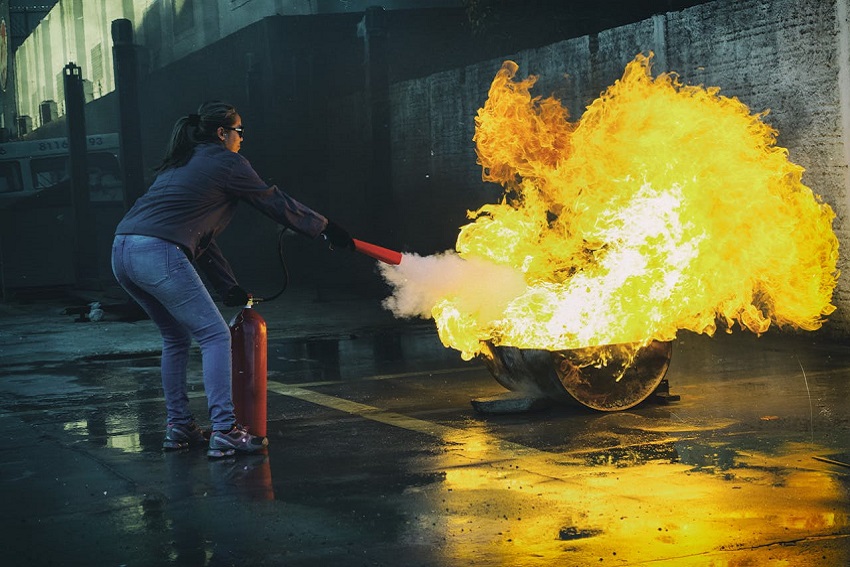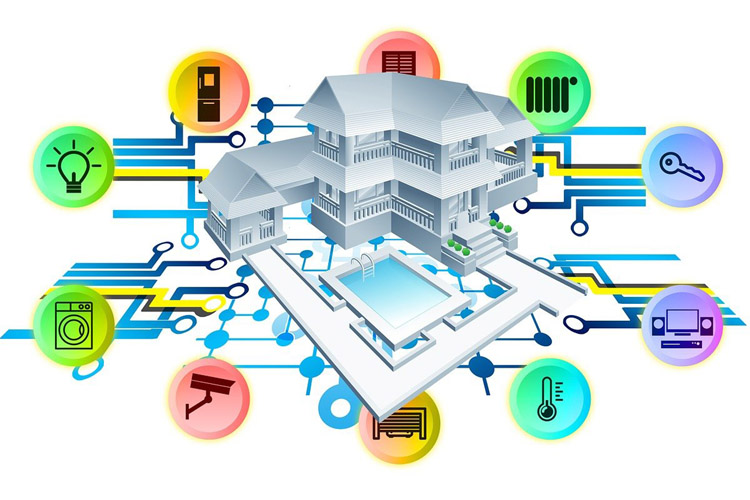When it comes to fire injuries, prevention is always better than cure. Taking proactive measures to prevent fires can greatly reduce the risk of injuries and save lives. In the following, we will explore some effective fire prevention methods that can be used in your home, workplace, or any other environment.
12 Tips to Prevent Fire & Fire Injuries
1. Install Smoke Detectors
Smoke detectors are one of the most important fire safety devices you should have in your home or office. These small devices are designed to detect smoke and alert you to possible fires before they spread. It is necessary to install smoke detectors in every level of your building, including bedrooms, living rooms, and kitchens.
Make sure to test your smoke detectors regularly to guarantee they are functioning properly. Replace the batteries and the detectors themselves if they are not working as expected. Remember, smoke detectors can be a lifesaver, so never neglect their maintenance.
2. Keep Flammable Materials Away from Heat Sources
One of the biggest causes of fire injuries is the proximity of flammable materials to heat sources. It is imperative to keep flammable items like curtains, furniture, papers, and chemicals away from heat-emitting devices like stoves, space heaters, and electrical outlets.
Make sure there is enough clearance around heat sources and that they are not obstructed by any objects. If you have a fireplace, make sure to store firewood outside the building and keep it at a safe distance from the flames.
3. Practice Safe Cooking Habits
Cooking-related fires are alarmingly common. To prevent fire injuries in the kitchen, it is necessary to practice safe cooking habits. Never leave your cooking unattended, especially when using high heat or hot oil.
Keep flammable objects – like potholders, kitchen towels, and curtains – away from the stove and oven. It is also advisable to wear short sleeves or tight-fitting clothing while cooking to avoid accidental contact with open flames.
Keep a fire extinguisher in the kitchen and be sure that you and your family members know how to use it in case of an emergency. Familiarize yourself with the different types of fire extinguishers and their specific uses to tackle different types of fires effectively.
4. Electrical Safety
Electrical malfunctions are a common cause of fires. To prevent such incidents, prioritize electrical safety.
Regularly inspect the electrical cords and outlets in your home or workplace. Replace frayed or damaged cords immediately and avoid overloading electrical outlets. Be mindful of the wattage limits specified for each outlet and use power strips or surge protectors when necessary.
It is also advisable to hire a licensed electrician to conduct regular inspections of your electrical system. They can identify hidden problems and take care of them before they lead to fires.
5. Fire Safety Measures
While fire prevention methods are necessary, it is equally important to have proper fire safety measures in place. In this section, we will discuss some fire safety measures that can minimize the risk of injuries and facilitate a quick response in case of a fire.
6. Create an Emergency Evacuation Plan
Having a well-designed emergency evacuation plan goes a long way toward providing for the safety of individuals in a building during a fire. It is important to create a plan that includes clear guidelines on how to evacuate the building, designated meeting points outside, and a chain of command to communicate and coordinate during emergencies.
Conduct regular drills to practice the evacuation plan with all occupants of the building. These drills will help people familiarize themselves with the plan and assure a smooth and orderly evacuation in case of a real fire.
7. Install Fire Extinguishers and Fire Alarms
In addition to smoke detectors, have fire extinguishers and fire alarms installed in your home or workplace.
Fire extinguishers are effective tools to combat small fires. Place them strategically in easily accessible locations, like near exits and in high-risk areas like kitchens. Make sure that everyone in the building knows the location of fire extinguishers and how to operate them.
Fire alarms, on the other hand, are designed to alert occupants of a building to a fire. Install them in every level of the building, making sure they are in proper working condition. Regularly test the fire alarms and replace batteries as needed.
8. Improve Building Infrastructure and Safety Features
Improving building infrastructure and safety features is critical for improving fire safety. Install fire-resistant doors to compartmentalize the building and prevent the spread of fire. Make sure that stairways and exits are clear, well-lit, and easily accessible. Conduct regular maintenance of fire escapes and make sure they are structurally sound and can be used in an emergency. Install sprinkler systems to suppress fires and limit their spread. Label fire exits clearly with illuminated signs for easy identification.
9. Fire Safety Precautions
To further increase fire safety and prevent injuries, it is important to take certain precautions. These precautions not only lessen the risk of fires but also make sure that everyone in the building is well-prepared to handle emergencies.
10. Invest in Fire Safety Training
Providing fire safety training to those in your home or workplace is a big step toward preventing fire injuries. Conduct regular training sessions to educate occupants about fire hazards, prevention methods, and emergency procedures.
Teach individuals how to use fire extinguishers effectively and how to identify different types of fires. Also, make sure everyone understands the evacuation plan and knows the location of emergency exits and meeting points.
Fire safety training should be an ongoing process, with regular refreshers and updates to keep everyone well-informed and prepared.
11. Teach children about fire safety
Children should be educated about fire safety from a young age. Teach them about the dangers of playing with fire, the importance of not tampering with smoke detectors or fire alarms, and how to react in case of a fire.
Encourage them to memorize important emergency numbers, like the local fire department (or 911), and show them how to “dial” them correctly. Make sure they understand the basics of evacuation, including crawling low under smoke and feeling doors for heat before opening them.
By instilling fire safety knowledge and skills in children, we can significantly reduce the risk of fire injuries in schools and residences.
12. Regularly inspect fire safety equipment
Fire safety equipment, including smoke detectors, fire alarms, and fire extinguishers, should be inspected and maintained regularly to ensure they are in proper working condition.
Assign someone in your home or office to be responsible for conducting these inspections and keeping track of maintenance schedules. Replace batteries, test devices, and replace expired fire extinguishers promptly.
Remember, fire safety equipment is only effective when it is well-maintained and in working order.
Will your preparedness be enough to prevent fire injuries?
Preventing fire injuries requires a combination of proactive fire prevention methods and the implementation of proper fire safety measures. By following the tips mentioned above, you can greatly reduce the risk of fires and provide for the safety of yourself, your loved ones, and your property. Remember, fire safety is a shared responsibility, so make sure to spread awareness and educate others about the importance of fire prevention and safety.




